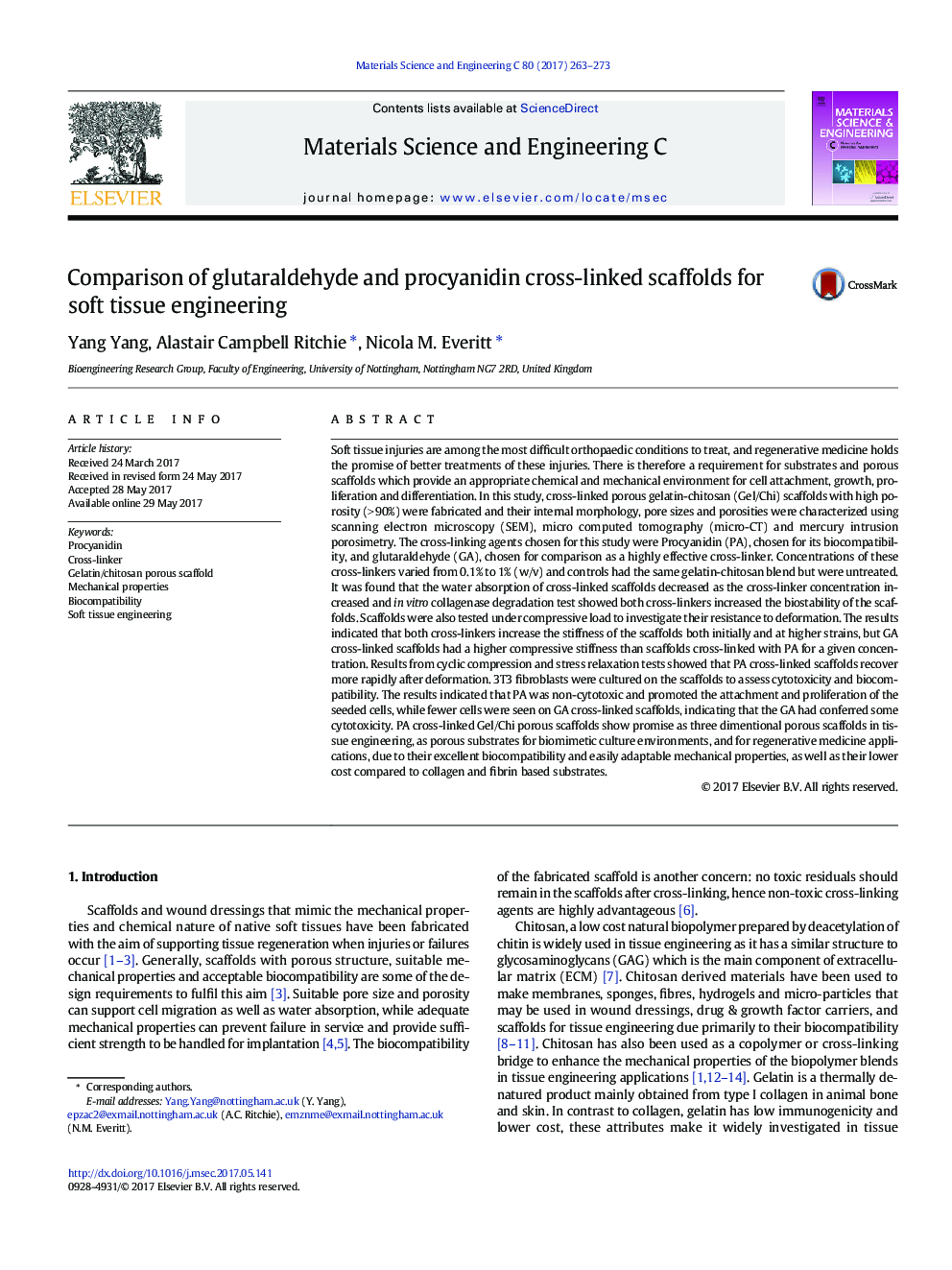| کد مقاله | کد نشریه | سال انتشار | مقاله انگلیسی | نسخه تمام متن |
|---|---|---|---|---|
| 5434319 | 1509141 | 2017 | 11 صفحه PDF | دانلود رایگان |
- Porous gelatin/chitosan scaffolds fabricated from freeze-drying method for soft-tissue engineering
- Procyanidin has the ability to increase the stiffness of the gelatin/chitosan scaffold.
- Procyanidin as a natural cross-linker shows great biocompatibility to cells.
Soft tissue injuries are among the most difficult orthopaedic conditions to treat, and regenerative medicine holds the promise of better treatments of these injuries. There is therefore a requirement for substrates and porous scaffolds which provide an appropriate chemical and mechanical environment for cell attachment, growth, proliferation and differentiation. In this study, cross-linked porous gelatin-chitosan (Gel/Chi) scaffolds with high porosity (>Â 90%) were fabricated and their internal morphology, pore sizes and porosities were characterized using scanning electron microscopy (SEM), micro computed tomography (micro-CT) and mercury intrusion porosimetry. The cross-linking agents chosen for this study were Procyanidin (PA), chosen for its biocompatibility, and glutaraldehyde (GA), chosen for comparison as a highly effective cross-linker. Concentrations of these cross-linkers varied from 0.1% to 1% (w/v) and controls had the same gelatin-chitosan blend but were untreated. It was found that the water absorption of cross-linked scaffolds decreased as the cross-linker concentration increased and in vitro collagenase degradation test showed both cross-linkers increased the biostability of the scaffolds. Scaffolds were also tested under compressive load to investigate their resistance to deformation. The results indicated that both cross-linkers increase the stiffness of the scaffolds both initially and at higher strains, but GA cross-linked scaffolds had a higher compressive stiffness than scaffolds cross-linked with PA for a given concentration. Results from cyclic compression and stress relaxation tests showed that PA cross-linked scaffolds recover more rapidly after deformation. 3T3 fibroblasts were cultured on the scaffolds to assess cytotoxicity and biocompatibility. The results indicated that PA was non-cytotoxic and promoted the attachment and proliferation of the seeded cells, while fewer cells were seen on GA cross-linked scaffolds, indicating that the GA had conferred some cytotoxicity. PA cross-linked Gel/Chi porous scaffolds show promise as three dimentional porous scaffolds in tissue engineering, as porous substrates for biomimetic culture environments, and for regenerative medicine applications, due to their excellent biocompatibility and easily adaptable mechanical properties, as well as their lower cost compared to collagen and fibrin based substrates.
Journal: Materials Science and Engineering: C - Volume 80, 1 November 2017, Pages 263-273
